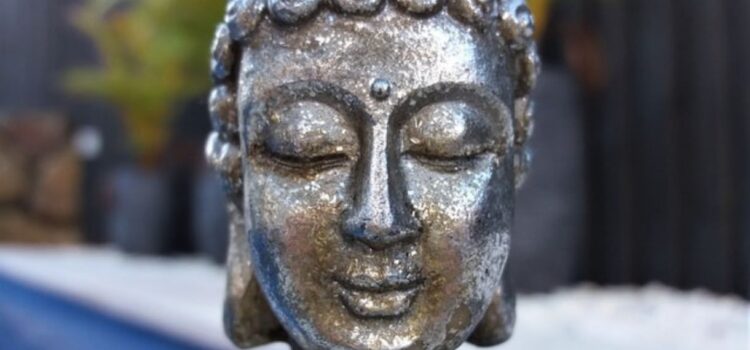

This article is an excerpt from the Shortform book guide to "Mindfulness in Plain English" by Bhante Gunaratana. Shortform has the world's best summaries and analyses of books you should be reading.
Like this article? Sign up for a free trial here .
What is vipassana meditation? What is the ultimate goal that vipassana practitioners try to achieve?
Vipassana is perhaps one of the most practiced forms of meditation in the mainstream yoga culture. But what is vipassana meditation exactly? In simple terms, vipassana meditation is the type of meditation where you practice observing your stream of consciousness without entertaining what comes up.
In this article, you will learn what vipassana meditation is, the purpose of vipassana practice, and its ultimate objective.
What Is Vipassana Meditation?
Vipassana Meditation (or insight meditation) draws its roots from Theravada Buddhism. Before answering the question, what is vipassana meditation, let’s dispel some of the common misconceptions about it.
- Vipassana meditation is not aimed at achieving relaxation or euphoria. You can achieve a deep and blissful relaxation (eg through samatha meditation), but this is only temporary. The goal of vipassana is further: awareness.
- Vipassana meditation is not going into a trance. In a trance, you lose control of yourself and are susceptible to control by another party. In deep concentration, you maintain control of yourself.
- Vipassana meditation doesn’t let you have psychic powers.
Furthermore, vipassana meditation is not mindless, automatic, and predictable. It should be an experiment every time. If you reach a feeling of predictability in your practice, you have stagnated and gone off track. Look at each second as though it were the first and only second in the universe.
The Goal of Vipassana Meditation
Vipassana meditation involves concentration, like prayer and yogic meditation. But concentration is a means to an end – the ultimate goal is awareness, or mindfulness.
Awareness is the ability to listen to our own thoughts without being caught up in them.
- So much of your thought is automatic that you cannot be said to have real control of your thinking. Up pops a stimulus (an attractive person, the smell of food, annoying party music) – and immediately you react with a feeling.
- The first step to avoid this is to realize what you are doing as you are doing it, to stand back and quietly watch. You learn to scrutinize your own perceptual process with precision. You decouple the perception of a stimulus with the arising of thought.
- With meditation, you examine the very process of perception. You watch the feelings that arise and the changes that occur in your own consciousness.
Awareness is attentive listening, mindful seeing. You look at what is right there in front of you, rather than getting caught up in an endless thought-stream that overrides reality.
Awareness is being completely honest with yourself. You watch your mind and body, notice things that are unpleasant to realize, then come to terms with it.
- You learn not to reject things you dislike about yourself or your life – growing old, having your mistakes pointed out, your bad habits.
- You find the roots of emotions like greed, hatred, and anger. You extinguish them.
- If you do not have the root of hatred, no one can make you angry by pointing out your faults. Instead, you are thankful to that person for pointing out a deficiency that you can improve about yourself.
The state you are aiming for is where you are aware of everything that is happening in the moment, observing your thoughts forming and disappearing without engaging in the thoughts.
This is different from thinking about all thoughts that come up, which is akin to daydreaming.
There is a difference between being aware of a thought and thinking a thought. The “texture” is different.
- Being aware of a thought is light in texture, arising lightly as a bubble, and the thought passes without giving rise to the next thought in the chain.
- Normal conscious thought is heavier in texture – “ponderous, commanding, compulsive.” It leads straight to the next thought in the chain.
The object is to use breathing as the focus of concentration. Your breath is the reference point from which the mind wanders and is drawn back. Distractions, by definition, are deviations from a central focus. From this central focus of breathing, you then go on to note all physical and mental other phenomena that arise.
Why focus on breathing, and not any other thought or sensation? In Vipassana, breathing is the centre of focus because:
- It is portable, cheap, and freely available.
- It happens automatically for most of the day, so being aware of it is subtly challenging. You’ve got to work at it to focus on it, but not focus too hard.
- You need to learn to focus on your breathing without manipulating it. There are lessons to be learned here on the nature of will and desire.
- Analogy: when sawing wood, you don’t watch the saw blade. You watch the line you’re cutting along.
- There are many variations of breathing (length, depth, smoothness) that are interesting to observe.
- But you must observe it without thinking about it, without verbalizing your thoughts about it. Don’t think: “my breath is smoothening out! What’s going to happen next?” Return merely to focusing on the breath.
- Breath is universal to all living things, so it also connects you to the rest of the living world.
- The breath is naturally a present-moment process. Once it passes it passes, and the next one comes. This transience is different from our memories or our future worries and plans.
Handling Distractions
Distractions will naturally arise. You’ll learn ot deal with them.
At times you will find yourself utterly incapable of wrangling your mind from thinking random thoughts. You will not be aware of where the thoughts come from, and you will feel crazy. This is the “monkey-mind.” Realize that your mind has always been this way – you have just never noticed.
Gently but firmly return to your focus. Do not get upset or judge yourself from straying. Do not force things out of your mind – this adds energy to the thoughts that will make them return stronger.
Set small goals. Try to focus for just one inhalation and exhalation. You will still fail, but keep at it.
States of Mind to Avoid
Just as you should avoid thinking, you should avoid sinking. Sinking is the dimming of awareness, a mental vacuum where there is no thought, no concentration on anything. It is like a dreamless sleep. It is a void to be avoided.
Do not go in expecting goals, like the ability to solve problems. This will load your brain with problems to be solved. Take a break from all that worrying and planning. Let your meditation be a complete vacation. The problems will take care of themselves later.
Vipassana Meditation and the 3 Buddhist Truths
The ultimate objective of vipassana is to learn to see the Buddhist truths of existence: impermanence, unsatisfactoriness, and selflessness.
Impermanence
- The world is forever changing. Molecules within your computer, your body, your home are shifting and slowly dissolving.
- One day you look at yourself and you’ve aged. Aghast, you pine for lost youth. Where does this pain come from? Your own inattention – you failed to look closely at life. You assumed mistakenly that things would last forever.
- With meditation, you perceive life as ever-flowing movement. All things are inherently transitory.
Unsatisfactoriness
- Every worldly thing is in the end unsatisfying. There is no peace in clinging onto things – material possessions, sensations, emotions, health.
- Many experiences themselves simply cause suffering – pain, sorrow, grief.
- Even when you have pleasant experiences, they inevitably end, and you pine for more. You grasp onto the best memories, chasing them endlessly.
Selflessness
- You have a deeply ingrained notion of self that is “me.” You view “me” as a thing separate from all other things. You pinch off “me” from the rest of the universe, then grieve over how lonely you feel. Doesn’t this seem self-defeating?
- WIth meditation, you chip away at the concept of “me” to see your place in human society. In this way, you become tied to everyone else.
The three factors of meditation are morality, concentration, and wisdom. These influence the other.
- Understanding things deeply requires a high-level objective view, giving equal weight to everyone’s concerns. This requires freedom from greed, envy, and other selfish psychic irritants.
- When you have wisdom to truly understand a situation, compassion toward all parties involved is automatic, and thus you automatically behave morally as you restrain yourself from any thought or deed that may harm others.
- When you don’t understand things deeply, then you create problems. You don’t see the consequences of your actions.
Vipassana meditation can also lead to intuitive problem solving. When your conscious mind gets in the way of solving a thorny problem, your intuition can pop out a solution.

———End of Preview———
Like what you just read? Read the rest of the world's best book summary and analysis of Bhante Gunaratana's "Mindfulness in Plain English" at Shortform .
Here's what you'll find in our full Mindfulness in Plain English summary :
- How to practice mindfulness daily
- How to recognize emotions as they arise
- Why you have to let go of emotions for peace






